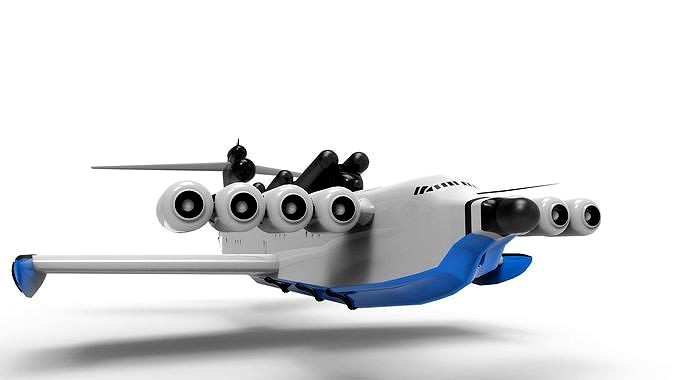CG Trader

Lun-Class Ekranoplan
by CG Trader
Last crawled date: 3 years, 2 months ago
The Lun-class ekranoplan (also called Project 903) is a ground effect vehicle (GEV) designed by Rostislav Alexeyev in 1975 and used by the Soviet and Russian navies from 1987 until sometime in the late 1990s. It flew using lift generated by the ground effect acting on its large wings when within about four metres (13 ft) above the surface of the water. Although they might look similar to traditional aircraft, ekranoplans like the Lun are not classified as aircraft, seaplanes, hovercraft, or hydrofoils. Rather, crafts like the Lun-class ekranoplan are classified as maritime ships by the International Maritime Organization due to their use of the ground effect, in which the craft glides just above the surface of the water. The ground effect occurs when flying at an altitude of only a few meters above the ocean or ground, the wings push air downwards where it is compressed between the wings and ocean surface. This causes higher pressure under the wings and creates lift. This effect does not occur at high altitude. The name Lun comes from the Russian word for the harrier. The Lun-class ekranoplan was developed on the basis of the experimental KM ekranoplan, which was nicknamed the Caspian Sea Monster. The Lun was powered with eight Kuznetsov NK-87 turbofans, mounted on forward canards, each producing 127.4 kN (28,600 lbf) of thrust. It had a flying boat hull with a large deflecting plate at the bottom to provide a step for takeoff. It had a maximum cruising speed of 550 kilometres per hour (340 mph). Equipped for anti-surface warfare, it carried the P-270 Moskit (Mosquito) guided missile. Six missile launchers were mounted in pairs on the dorsal surface of its fuselage with advanced tracking systems mounted in its nose and tail. The only model of this class ever built to completion, the MD-160, entered service with the Soviet Navy Caspian Flotilla in 1987. It was retired in the late 1990s and sat unused at a Caspian Sea naval base in Kaspiysk until 2020. The second Lun-class ekranoplan was partially built in the late 1980s. While its construction was underway, it was redesigned as a mobile field hospital for rapid deployment to any ocean or coastal location. It was named the Spasatel (Rescuer). Following the collapse of the Soviet Union in 1991 and cancellation of military funding, construction of the second craft was halted.[3][10] As of 2021, the uncompleted Spasatel is stored adjacent to the Volga river in an old industrial complex within the central Russian city of Nizhny Novgorod. airplane military technology aircraft jet machinery navy transportation defence steel fast power vehicle military aircraft
